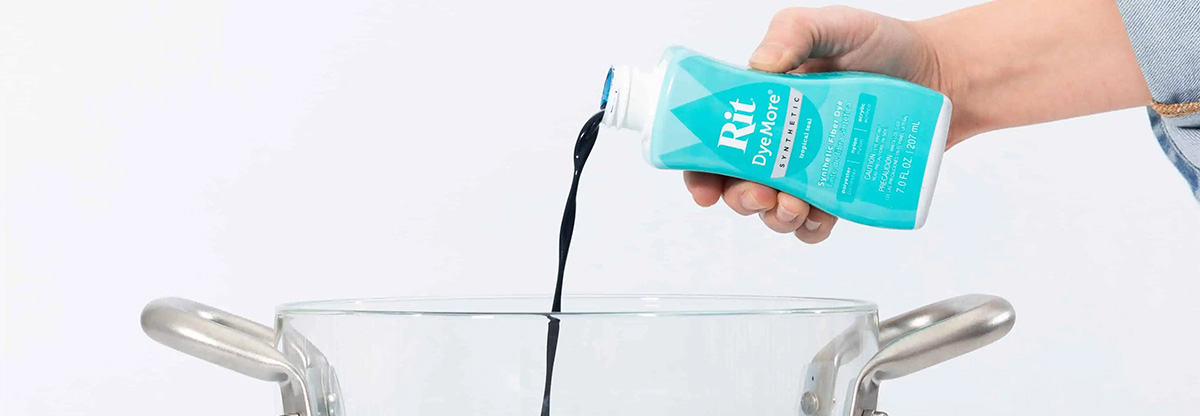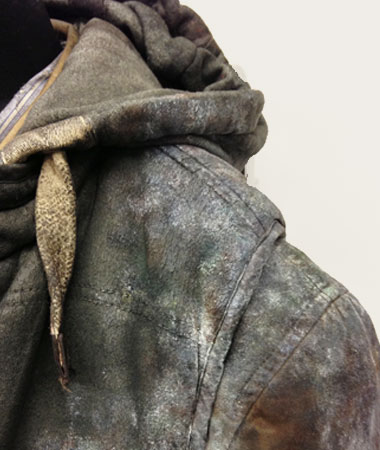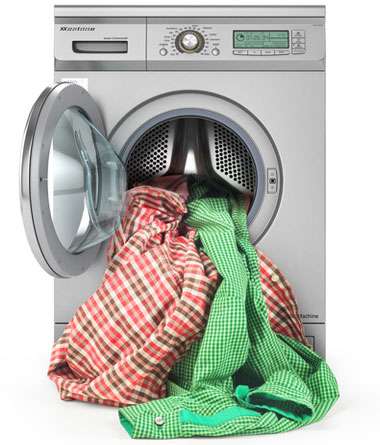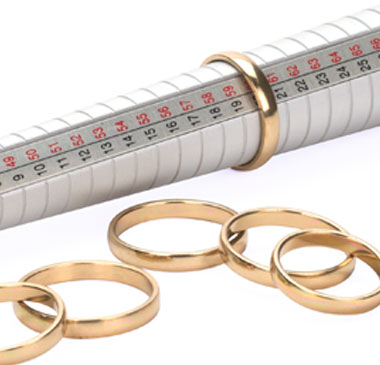Rit DyeMore - Dye Instructions
Important information and instructions for dyeing with DyeMore:Stove top method
Due to the complexity of dyeing synthetic fibres, you have to use the stove top method to maintain an almost boiling temperature for the duration of the dye process (93°C or higher).
Consequently, you cannot dye anything that (1) cannot fit in a pot on the stove and (2) you cannot use your washing machine as it is not able to reach the temperature that Rit DyeMore needs to penetrate the fabric.
Colour
If the garment to be dyed is white or off-white, you should be able to reach a real colour. However, if your garment already has a colour, the only thing you can do is dye it a darker shade.
Unfortunately, Rit Color Remover will probably not work on your synthetic garment.
Click here to learn more about overdyeing.
Patterns and logos
If the piece to be dyed has a pattern or a logo, the dye will mix with the already existing colour/s in the fabric and create new colours. You will find more information about this in our guide for overdyeing of patterns and logos.
Bleach stains and sun damage
The sun and bleaching products damage the fabric, which makes dyeing much more difficult. Therefore, we cannot guarantee that the stains disappear through dyeing.

Instructions:
• To find out how much dye you need, weigh the piece to be dyed on a kitchen scale or estimate the weight. Here is a general guideline: one bottle of Rit DyeMore is enough for dyeing up to 1 kg of dry fabric. If you want to dye 100% polyester or achieve a very strong colour tone, double the amount of dye.
• The fibre content and the weight will influence the dye result. If you are not sure whether your fabric will take the dye or reach the desired colour tone, we recommend that you dye a sample first (professionals always make tests first before dyeing a garment).
• Before dyeing, remove all visible stains from the garment. This is the only way to achieve an even dye result. Wash the garment in warm soapsuds without fabric softener or use a finishing remover. This helps to remove all finishings that may interfere with dye absorption.
• Cover your work area around the stove with a plastic tablecloth or newspaper and keep paper towels handy to protect against any splashes.
• Wear rubber gloves to protect your hands from stains and the heat. Remember: the water is very hot!
As dyeing of synthetic fabrics is very complicated, you have to use the stove top method to keep the temperature at near boiling temperature (at least 93°C or 200°F) for the duration of the dye process.
So, let's get started:
• Fill a stainless steel pot with enough water to allow the fabric to move freely. We recommend approx. 10 to 12 liters of water per 500g of fabric.
• Add 1 teaspoon (5 ml) of washing up liquid or Synthrapol to the dye liquor to allow an even dye.
• Cover the pot and heat the water on the stove just below boiling point (93 ºC / 200 ºF). When the water begins to simmer, add the well shaken dye and mix well.
• Add the moist piece to the dye liquor (never dye dry clothing!)
• Keep the temperature at approx. 93ºC for the duration of the dye.
• Stir slowly and continuously. The first 10 minutes are the most critical. Stirring helps to get an even dye without stains.
• The pieces to be dyed can stay in the dye liquor between 10 minutes and one hour.
If you dye polyester or a polyester-cotton blend, leave the fabric for at least 30 minutes in the dye bath so that the dye is completely absorbed. Usually, nylon dyes very quickly and much darker than other fibres, so that the actual time needed in the dye bath is less.
• When the desired colour is reached, take the piece out of the dye bath. The fabric appears much darker when wet but becomes lighter as it dries. Squeeze out the excess dye.
• If you dye a blend of cotton, linen, rayon or ramie, use immediately after dyeing and before washing Rit ColorStay Dye Fixative, to intensify the colour and reduce colour bleeding.
• Rinse the garment in warm water, then let it cool gradually until the rinse water starts to run clear.
• Wash in warm water with a mild detergent, rinse and dry.
Have fun!
 We ship worldwide
We ship worldwide Top customer satisfaction!
Top customer satisfaction! Many payment options
Many payment options






